Central Middlesex Hospital
Acton Lane, Park Royal, NW10 7NS
Medical dates:
Medical character:
1903 - current
Acute, maternity
In 1897 the Willesden Board of Guardians acquired a 64 acre
site in Acton Lane from the Twyford Abbey estate. They built a
new workhouse and infirmary, which opened in 1903, providing
accommodation for 400 people, including 150 sick. By 1907 only
sick paupers were admitted to both buildings, which were now known as
the Willesden Workhouse Infirmary.
The buildings were extended in 1908, 1911 and 1914, when the Infirmary
was renamed the Willesden Institution.
In 1921, it became known as the Park Royal Hospital.
In 1930 the Middlesex County Council took over its administrative
control and it was renamed yet again in 1931, becoming the Central
Middlesex County Hospital, with 689 beds. With even more
extensions it had 890 beds by 1939.
During WW2 the Hospital was badly damaged by bombs.
When the Hospital joined the NHS in 1948, it was grouped together with
the Neasden, Kingsbury
and Willesden General Hospitals
under the North-West Metropolitan Regional Hospital Board.
In 1951 the Hospital had 842 beds.
In 1966 a further building was added for the maternity unit, which had
28 beds but, overall, the number of beds had been reduced to 736,
mainly for acute admissions.
In 1997 construction work began on a new Hospital building - the
Ambulatory Care and Diagnostic Centre (ACaD) - what we used to
call the Out-Patients Department - which opened in 1999. Clinical
services transferred from the old buildings to the new, and the second
phase of rebuilding began in 2003. The in-patients wing - the
Brent Emergency Care and Diagnostic Centre (BECaD) - opened in 2006,
with 214 beds.
|
Present status
(November 2008) |
|---|

The Old Refectory is now used as offices for various disability groups and the North West London Trust.
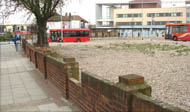
Perhaps the original wall of the Hospital in front of the piazza.
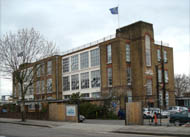
An old ward building used by Hammersmith Medicines Research
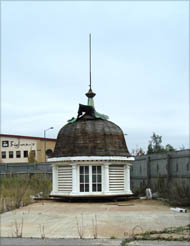
A cupola preserved from one of the old towers.
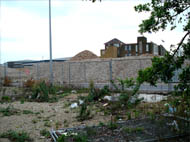
The Hammersmith Medicines Research building as seen from across the wasteland.
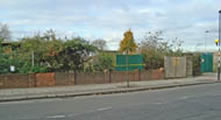
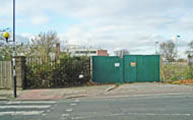
The former entrance of the Hospital in Acton Lane.
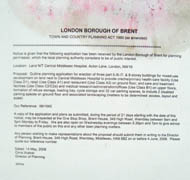
Public notice announcing redevelopment of the site.

The foundation stones of the old Hospital are placed on the outside wall of the Memorial Garden.
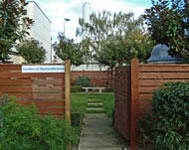
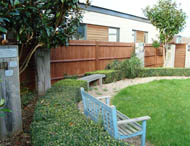
The entrance to the Memorial Garden (left). Dedication plaques are mounted on blocks of wood inside the Garden.
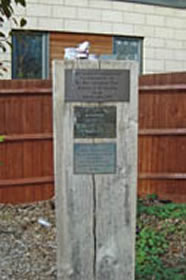
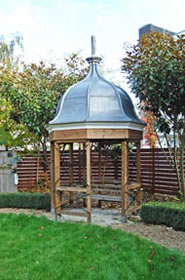
Dedication plaques commemorating lost children (left) and another of the cupolas from the old Hospital towers preserved in the Garden.
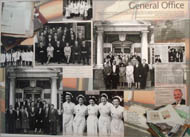
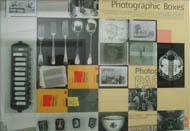
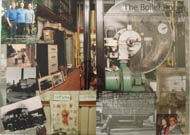
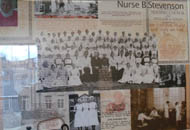
Various panels describing the history of the Central Middlesex Hospital are on display in the corridors.

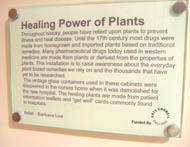
A vitrine containing an art installation by Barbara Lee, using salvaged medical glassware from the demolished Nurses' Home, is also on display. It is located off the main foyer by the lavatories.
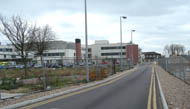
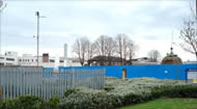
The new Hospital seen from Acton Lane (left) and the view from Central Way (right).
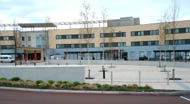
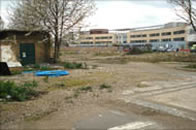
The new Hospital from across the piazza (left) and from across the wasteland (right).

The Acad building as seen from the Brent Birth Centre.
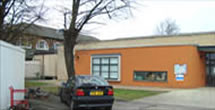

The bunker-like Brent Birth Centre (left) with its main entrance.

The northern elevation.
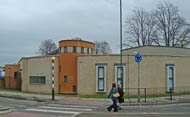
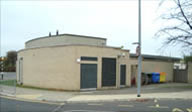
The rear elevations of the Brent Birth Centre - with graffiti.
|
Keith Moon, drummer of The Who, was born here. |
References
McNicol MW 1984 Central Middlesex Hospital. St Mary's Gazette 90. 34-36.
www.arkitektforum.org
www.avantiarchitects.co.uk
www.brent.gov.uk
www.british-history.ac.uk
www.corla.net
www.hdmagazine.co.uk
www.nwlh.nhs.uk
www.workhouses.org.uk